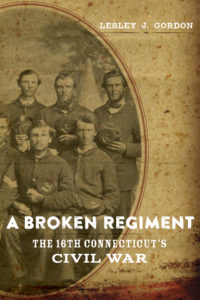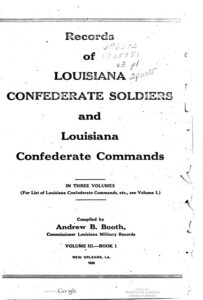Sgt Charles Broomhall at Antietam
14 April 2024
Almost exactly 20 years ago Carolyn Ivanoff shared with me (and AotW) her research about and transcription of the wartime diary of Charles D. M. Broomhall, Sergeant in the 124th Pennsylvania Infantry, describing his experience on the Maryland Campaign.
On my visit to the battlefield last Friday morning I saw this wayside for the first time. Maybe I just never stopped at that spot before.
I was stunned to see the heading quote from Sergeant Broomhall, from Carolyn’s work in the diary. That “fluttering” reference comes from a few lines earlier in his narrative:
At the commencement of the battle at day dawn [on 17 September 1862], our boys had been listening to the stray shots on the edge of the 1st named woods called the East Woods, the rebels had come through the corn and deployed pickets on the edge of the East Woods. Our pickets were deployed in the edge of this woods, consequently, at daylight the two picket lines found themselves face to face and that caused the suddenness of the onset. Our brigade was about 1/4 of a mile to the right and rear, and our regiment was brought up to near the clear sod field first spoken of while shot and shell went fluttering over our heads like partridges for sound.
Thanks again, Carolyn!
Dr. Lesley Gordon’s Roster, 16th Connecticut Infantry (2014)
6 February 2022
While researching her 2014 book about the regiment, Dr Lesley Gordon compiled a roster after my own heart, including pre- and post-war details not usually found in military records. She shared a spreadsheet containing her data on her book’s page. I’ve posted a copy here in the event that page ever goes away.
Here’s how she describes it:
This database of men who served in the regiment originated with the state of Connecticut’s Adjutant Generals Office Reports from 1862, 1869, and 1889. As I accumulated more (and sometimes conflicting) information, I filled in gaps and made corrections (especially birth and death dates, and postwar occupations) from the biographical materials collected [by] Ira Forbes and George Whitney … Death and birth dates seemed to have had the greatest inconsistencies in the various sources, and I tried to confirm these by cross-checking the U.S. census, bound regimental records, pension records, obituaries, local histories, as well as a comprehensive unit roster compiled by Scott Holmes. Thus, readers should be alerted that some discrepancies still remain here …
There may be discrepancies or minor issues, but it’s fantastic that she posted this online for anyone to use; it’s a rare and beautiful thing. Huzzah, Dr Gordon!
And I wish I’d found this earlier. It would have saved me untold hours with its clues to some of the more elusive men of the 16th at Antietam.
Huzzah! Hathi Trust
5 March 2021
My favorite basic source for Louisiana troops is Andrew Bradford Booth’s three volume set (in 7 books) of the Records of Louisiana Confederate Soldiers and Louisiana Confederate Commands (1920). A one-stop shop for the military basics on more than 102,000 individuals.
Until recently I’d consulted an online text transcription of Booth’s work, but it’s disappeared. A couple of days ago I found the Hathi Trust Digital Library has all 7 of the books, but had limited access to three of them for copyright issues.
Books published in the US before 1925 are now out of copyright – in the public domain – so I took advantage of the feedback form on the Hathi Trust site and pointed the problem out to them.
Amazing! Within an hour I had an acknowledgement and a few hours later Jessica from user support responded that she was passing my request to a copyright expert. The next day I got an email from Kristina saying she agreed the books are no longer under copyright and would open up access for US users. And she did, immediately. She also took the time to explain why they’d been restricted in the first place: there was a 1974 microfilming date on the copyright page.
This is in sharp contrast to the results I’ve had over the years from Google Books in many similar situations: Crickets. Nothing. Nada.
Bravo Hathi Trust!




